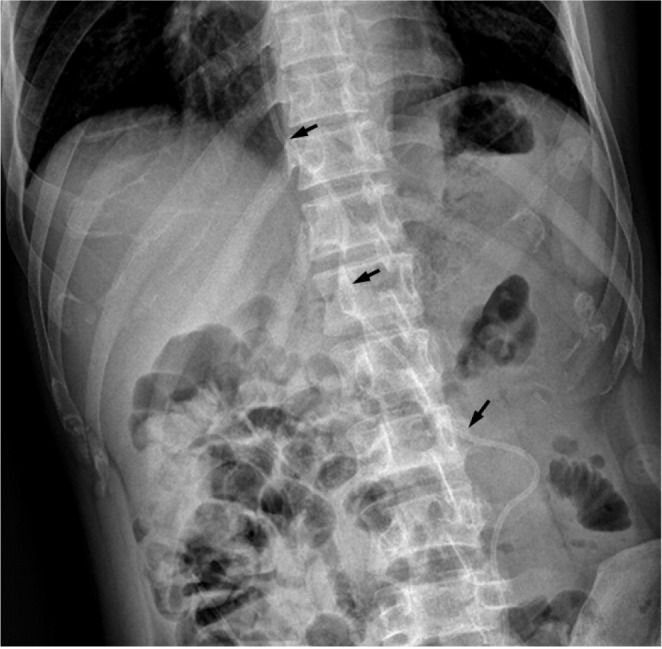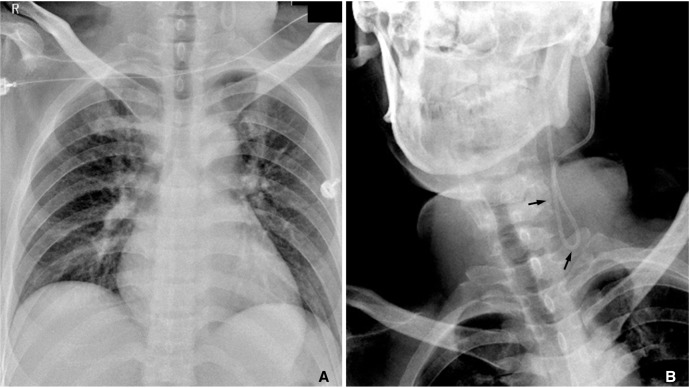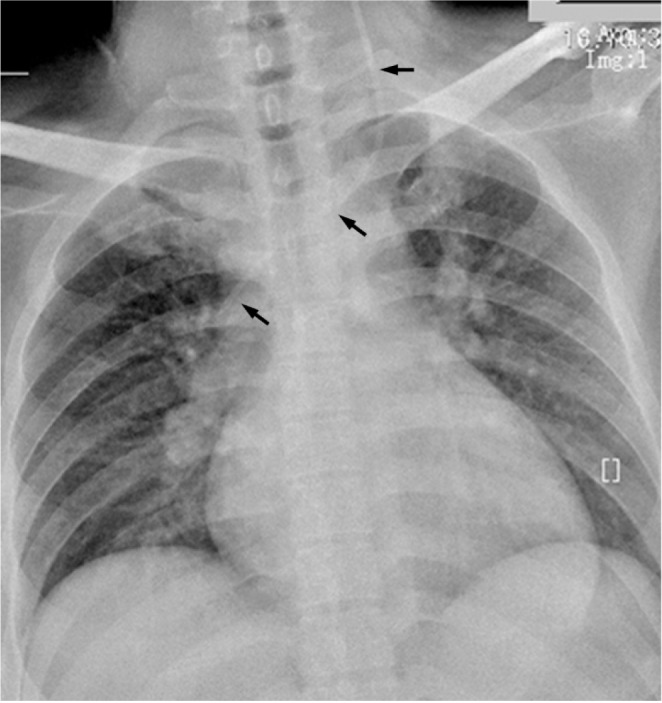Neurointervention.
2012 Sep;7(2):109-112. 10.5469/neuroint.2012.7.2.109.
Endovascular Intervention for Repositioning the Distal Catheter of Ventriculo-Atrial Shunt
- Affiliations
-
- 1Department of Neurosurgery, Southern Medical University, Nanfang Hospital, Guangzhou, China. qisongtao1@hotmail.com
- KMID: 1841097
- DOI: http://doi.org/10.5469/neuroint.2012.7.2.109
Abstract
- Displacement of distal ventriculo-atrial (VA) shunt is not uncommon. However, misplacement of the distal catheter of VA shunt in the internal jugular vein is a possibility, especially when conducted without intraoperative monitoring. We describe a patient in whom a VA shunt was performed due to failure of ventriculo-peritoneal shunt and the distal catheter of the shunt was found to be misplaced in the left internal jugular vein. Endovascular intervention via femoral vein was used to retrieve the distal catheter.
Keyword
MeSH Terms
Figure
Reference
-
1. Weprin BE, Swift DM. Complications of ventricular shunts. Techniques in Neurosurgery. 2002; 7:224–242.
Article2. Metellus P, Hsu W, Kharkar S, Kapoor S, Scott W, Rigamonti D. Accuracy of percutaneous placement of a ventriculoatrial shunt under ultrasonography guidance: a retrospective study at a single institution. J Neurosurg. 2009; 110:867–870. PMID: 19099376.
Article3. Cantu RC, Mark VH, Austen WG. Accurate placement of the distal end of a ventriculo-atrial shunt catheter using vascular pressure changes. Technical note. J Neurosurg. 1967; 27:584–586. PMID: 6065133.4. Gonzalez LF, Kim L, Rekate HL, McDougall CG, Albuquerque FC. Endovascular placement of a ventriculoatrial shunt. Technical note. J Neurosurg. 2007; 106(4 Suppl):319–321. PMID: 17465370.5. Machinis TG, Fountas KN, Hudson J, Robinson JS, Troup EC. Accurate placement of the distal end of a ventriculoatrial shunt with the aid of real-time transesophageal echocardiography. Technical note. J Neurosurg. 2006; 105:153–156. PMID: 16871892.6. Thomas J, Sinclair-Smith B, Bloomfield D, Davachi A. Non-surgical retrieval of a broken segment of steel spring guide from the right atrium and inferior vena cava. Circulation. 1964; 30:106–108. PMID: 14197828.
Article7. Koseoglu K, Parildar M, Oran I, Memis A. Retrieval of intravascular foreign bodies with goose neck snare. Eur J Radiol. 2004; 49:281–285. PMID: 14962660.
Article8. Ekong CE, Gabriel YH, Lopez JF. Percutaneous transfemoral retrieval of the runaway ventriculoatrial shunt. Can J Surg. 1979; 22:456–457. PMID: 387189.9. Tatsumi T, Howland WJ. Retrieval of a ventriculoatrial shunt catheter from the heart by a venous catheterization technique. Technical note. J Neurosurg. 1970; 32:593–596. PMID: 5438102.10. Tubbs RS, Barnhart D, Acakpo-Satchivi L. Transfemoral vein placement of a ventriculoatrial shunt. Technical note. J Neurosurg. 2007; 106(1 Suppl):68–69. PMID: 17233318.
- Full Text Links
- Actions
-
Cited
- CITED
-
- Close
- Share
- Similar articles
-
- Percutaneous Insertion of the Distal Catheter during Ventriculo-Atrial Shunts. A Simple and Reliable Method
- The Development of the Shunt Guiding Kit for the Proper Positioning of the Proximal Shunt Catheter to the Lateral Ventricle in the Ventriculo-Peritoneal Shunt Operation
- Intraparenchymal Pericatheter Cyst as a Complication of a Ventriculo-Peritoneal Shunt in a Premature Infant
- Asymptomatic Fracture of a Distal Shunt Catheter after Ventriculoperitoneal Shunt for Post-traumatic Hydrocephalus
- Efficacy of Laparoscopy Guided Ventriculo-Peritoneal Shunt : Analysis of Data in 102 Consecutive Patients




